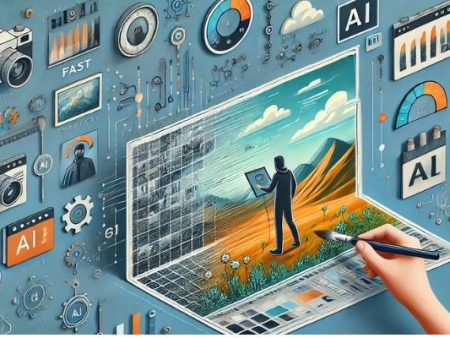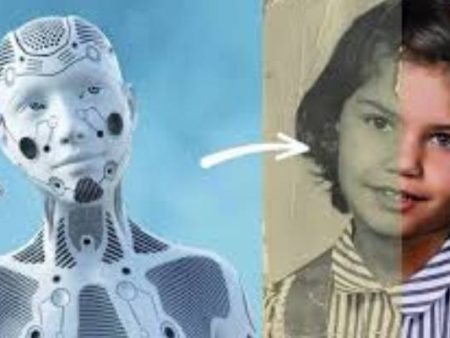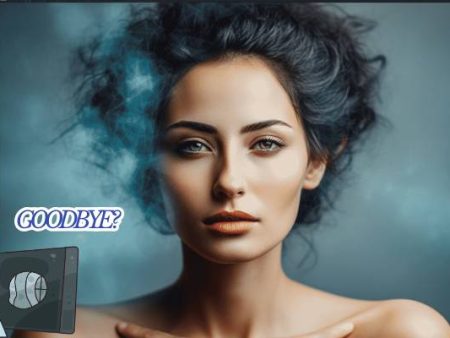The question has been circling around art studios, coffee shops, and even classrooms: Can artificial intelligence create art that rivals human creativity?
At first glance, it feels almost absurd. How can lines of code, trained on massive datasets, possibly replicate the nuance, pain, joy, and serendipity of human expression?
Yet here we are—in the middle of a cultural shift where AI image generation has made headlines, disrupted industries, and inspired a mix of awe and fear.
Some argue it’s nothing more than clever mimicry. Others believe it represents an entirely new art form.
I’ll admit, even I swing back and forth. There are days I see AI’s potential and feel exhilarated, and days I worry about what it means for our sense of originality.
But the real question isn’t whether AI can make “good” art. It’s whether it can touch us in ways that human-made art does—whether it can resonate, provoke, and live on in our memories.
And that’s what I’ll explore here, from the technology itself to the emotional and cultural impact.
How Rise of Text-to-Image Tools: Works
Before debating artistry, let’s talk mechanics. How rise of text-to-image tools: works isn’t as mysterious as it seems.
At its core, AI image generation is powered by large models trained on billions of images. Think of it as teaching a machine visual language—just as kids learn by observing, copying, and eventually creating.
When you type in a prompt—say, “a watercolor painting of a child reading under an oak tree”—the AI interprets your words and stitches together patterns it has learned.
What’s surprising isn’t that the AI produces something, but that it often produces something striking. Entire scenes materialize in seconds. Styles, from impressionism to surrealism, can be replicated almost flawlessly.
The artistry here lies partly in the prompt. People have begun calling it “prompt engineering,” and it’s no exaggeration.
The way you phrase your request can dramatically shape the final output. And in that sense, the collaboration between human and machine is fascinating—like guiding a very powerful but unpredictable assistant.
About Photos: Which Will Dominate
One question keeps surfacing: about photos: which will dominate—the ones taken with cameras or the ones conjured by algorithms?
Photography was once seen as a rival to painting, accused of cheapening the craft. But eventually, photography became art in its own right. Something similar may happen with AI-generated visuals.
But here’s the catch: unlike photography, which still requires a physical connection to the world (light, lenses, film or sensors), AI art doesn’t depend on reality.
It can invent entire worlds. That’s both its strength and its weakness.
- Strength: Infinite imagination. No physical limits.
- Weakness: Lack of grounding. No authenticity tied to a moment in time.
My gut tells me that photographs will retain a unique place, because they capture life as it is lived.
AI-generated images, on the other hand, might dominate in commercial and conceptual spaces where imagination trumps authenticity. Both will coexist, but their purposes will diverge.
The Impact of Graphic Designers (Or Not)
We can’t avoid this: what happens to professional creatives? The impact of graphic designers (or not) is already being felt.
Agencies that once relied heavily on human labor for quick mockups or concept boards now turn to AI for faster, cheaper alternatives.
Designers are being asked to adapt—to use AI as part of their toolkit rather than compete against it.
Some designers fear displacement. Others see opportunity. After all, AI can handle repetitive or technical tasks, leaving humans free to focus on strategy, storytelling, and nuance.
A 2023 survey by ResumeBuilder found that nearly half of U.S. companies using AI in their creative workflows expect job roles to shift, not vanish entirely.
Designers who embrace AI may find themselves in roles that emphasize vision, not just execution.
So, will AI replace graphic designers? I’d argue no—it will reshape them. The tools will change, but the demand for human taste, empathy, and cultural sensitivity will remain irreplaceable.
Debate on Are AI-Generated Portraits More…
Here’s a particularly thorny debate: debate on are AI-generated portraits more compelling than human-made ones.
On one side, AI can create portraits with impossible precision—skin tones perfectly balanced, lighting impeccable, even fantasy details woven in. They can be breathtaking at first glance.
But ask yourself: does a portrait without a sitter carry the same weight?
When we look at a human-painted portrait, we’re not just seeing the subject—we’re seeing the artist’s interpretation, their brush strokes, their mood on the day they painted. That lived human context matters.
AI portraits can astonish technically, but they often lack that trace of imperfection, that fingerprint of humanity that makes us lean in closer.
Yet, paradoxically, I’ve also seen AI portraits that startled me with emotion—images that felt like they carried a story.
Could it be projection on my part? Possibly. But art has always been partly about what we bring to the experience.
So, are they “more” or “less”? Maybe that’s the wrong question. Maybe the question is: what kind of meaning do we want our portraits to hold?
Statistics and Shifting Public Opinion
Numbers help ground this conversation.
- According to Statista, about 27% of U.S. adults had tried an AI image generator by 2023—a massive adoption rate for such a new technology.
- A Pew Research Center study revealed that 62% of Americans believe AI will have a significant impact on creative work within 20 years.
- The global AI art market, according to MarketsandMarkets, is projected to grow from $16 billion in 2023 to $63 billion by 2028.
Clearly, this isn’t fringe anymore. The public is engaging, experimenting, and in many cases, embracing AI art—even as debates about authorship and authenticity swirl.
The Human Factor: Why Empathy Still Matters
Here’s where I land personally: no matter how advanced AI becomes, it struggles with empathy.
Art isn’t just about technical execution. It’s about context, relationships, emotions, and often pain.
When Frida Kahlo painted her suffering, we feel it not just because of the colors but because we know her story.
Can AI replicate that? Not really. It can simulate the visuals, but it can’t live the experiences that give them weight.
This doesn’t make AI art meaningless. It makes it different. It’s a mirror of collective aesthetics, not an individual’s journey.
That’s why I see AI more as collaborator than competitor. It expands possibilities but doesn’t erase the human need for expression.
Ethical Questions We Can’t Avoid
Of course, we’d be naïve not to confront the ethical side:
- Copyright: Many AI systems are trained on existing art, raising legal and moral questions about theft and consent.
- Authenticity: If AI can generate “fake” images indistinguishable from reality, what does that mean for journalism, politics, or history?
- Access and Inequality: While AI democratizes creation, those with the best tools and resources may still dominate.
These issues won’t solve themselves. We’ll need policies, community standards, and perhaps new definitions of authorship.
So, Can AI Rival Human Creativity?
Here’s my take: yes and no.
Yes—AI can produce art that surprises us, delights us, and even moves us. It can rival human creativity in execution and imagination.
No—AI cannot replicate lived experience, cultural context, or the personal fingerprints that make art timeless. It lacks the raw vulnerability of a human heart.
The real future, I believe, lies in fusion. Human and AI together, shaping new forms of expression neither could achieve alone.
Just as photography didn’t end painting, AI won’t end human creativity. It will force it to evolve.
Conclusion: Art, After All, Is Human
The journey from Photoshop to AI has brought us here: a world where machines can generate art in seconds.
But the deeper truth is that art’s meaning doesn’t lie only in the image—it lies in the connection it creates.
So, can AI create art that rivals human creativity? Perhaps in certain ways, yes.
But does it replace the human impulse to tell stories, to process grief, to celebrate love? No. And maybe that’s the comfort we need.
Because at the end of the day, the canvas isn’t just what’s on the screen. It’s the dialogue between artist and audience, the stories behind the strokes, and the empathy woven into the work. And for now, at least, that remains deeply, beautifully human.


